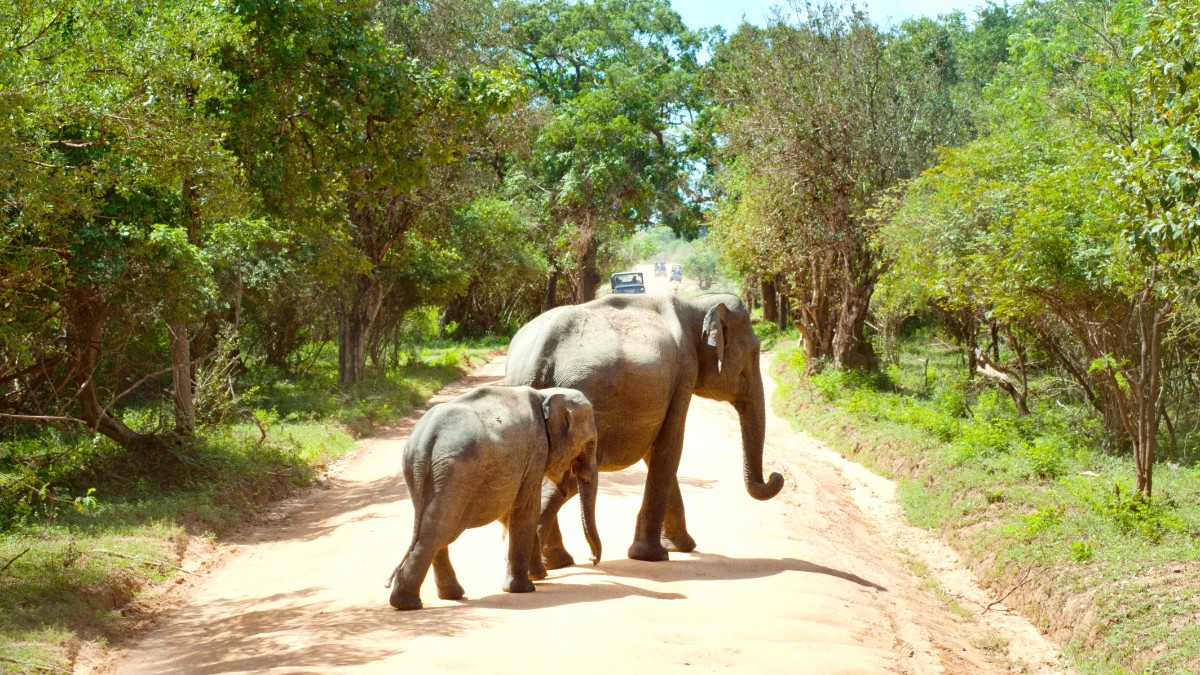
The South, Sri Lanka
Sri Lankan cuisine reflects its long history of trade and colonial rule. Indian, Arab, Malay, Dutch, Portuguese, and British influences have all shaped the island's culinary traditions.
This fusion results in a cuisine known for its deep flavors, abundant use of spices, creamy coconut milk, and fresh seafood, especially in coastal areas like the south.
Traditionally, many Sri Lankans eat with their right hand. You can try this method, or simply ask for cutlery if you prefer.
Dishes are often prepared and served family-style, allowing everyone to share and sample a variety of curries.
Always use your right hand for eating, giving, and receiving items, as the left hand is considered unclean.
The country's staple meal. It consists of a generous plate of rice served with several small bowls containing various vegetable, meat, or fish curries, lentil dhal, and fresh sambols (condiments).
You can find it everywhere, from roadside eateries to hotels.
Bowl-shaped pancakes made from fermented rice flour and coconut milk, with crispy, lace-like edges and a soft center.
Often served with an egg fried into the middle (Egg Hopper) or plain. Popular for breakfast or dinner.
Delicate, steamed rice flour noodles formed into intricate nests.
Served with various curries and sambols, a common breakfast item.
Creamy buffalo curd served with kithul treacle (palm syrup). This is a common dessert, especially in the south.
A steamed coconut custard pudding, often flavored with cardamom and jaggery (palm sugar).
These are mainly found within the luxury safari lodges and resorts near Yala. They offer a mix of international and refined Sri Lankan cuisine, providing a high-quality dining experience.
Available in Tissamaharama, these restaurants offer a mix of Sri Lankan, Indian, and some Western dishes. Many guesthouses also provide full meal services for their guests.
Numerous small local restaurants (known as 'hotels' or 'restaurants') and street food stalls, especially in Tissamaharama and Kataragama, provide authentic and affordable Sri Lankan meals.
King Coconut Water (Thambili) is refreshing and naturally sweet. Fresh fruit juices (mango, passion fruit, pineapple, lime) are widely available. Ceylon Tea is world-famous.
Arrack is a potent local spirit made from fermented coconut flower sap, often mixed with soda water or fruit juice. Lion Lager is a popular local beer.
Special sweetmeats are common in April.
Traditional oil cakes.
Crispy rice flour cookies.
Sri Lankan cuisine is very vegetarian-friendly. Many vegetable curries, dhal, and coconut-based dishes are available.
A large number of dishes are naturally vegan due to the prevalence of plant-based ingredients.
Halal food is widely available in Muslim-majority areas like Kataragama. Many restaurants serve halal meat or have vegetarian options.
Kosher food is extremely limited. Travelers requiring kosher food should stick to vegetarian/vegan options, or bring their own certified food.
Not a major tourism offering in the immediate Yala area.
There are no specific food festivals tied directly to the Yala region.
Luxury safari lodges often arrange unique dining experiences for their guests.
Meals are served in a scenic outdoor setting, often within the park's buffer zone.
Enjoyed during or after safari drives.
The Yala region offers varied dining experiences, from high-end options within luxury safari lodges to budget-friendly local eateries.
Limited international cuisine options are available outside of the larger resorts. Some mid-range restaurants might offer basic Chinese or Western dishes.
The Yala National Park region offers opportunities to experience authentic local flavors, often with a southern twist, known for fresh seafood and spicier curries.
Sri Lankan food is bold, aromatic, and often spicy. Coconut milk provides a creamy richness, balancing sweet, sour, salty, and spicy elements.
The cuisine reflects a long history of trade and colonial rule, with Indian, Arab, Malay, Dutch, Portuguese, and British influences shaping its traditions.
Prepare to savor the rich, aromatic tastes of Sri Lanka. Be open to trying traditional dishes and engage with local vendors for an authentic experience.